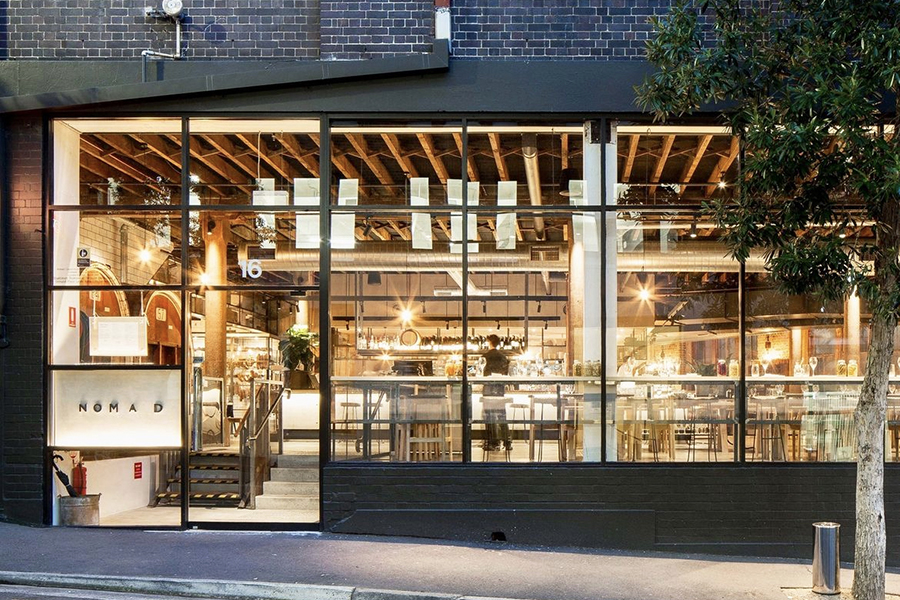Does the turnover of a store include online purchases? It could be argued that ‘online’ purchases have nothing to do with the bricks-and-mortar store. But what if the customer picks up the goods from the store? Or what if the customer goes into the store, checks out the goods and then buys online? John Morrison looks at the issue.
It is not uncommon for landlords to be of the view that e-commerce sales having a connection with a store should be included in ‘gross sales’ for that store. It will also come as no surprise that most tenants are of the view that e-commerce sales are excluded from ‘gross sales’. So who is right?
The evolution of consumers’ shopping patterns and the changes that both retailers and landlords must make to their offering to remain competitive has reached the stage where e-commerce requires regular consideration and a great deal of acumen to keep ahead of the ever-changing trends.
The introduction of online shopping is the catalyst for the change in the retail experience offered to consumers and is slowly moving the focus from the location of ‘bricks and mortar’ to concepts described as ‘clicks and mortar’, ‘click and collect’, ‘multi-channel’ or ‘omni-channel’ retailing.
This change is being embraced by consumers and means that decisions to purchase items are no longer the sole domain of the shopping mall. The consumer may now shop at their leisure whenever and wherever it suits them. The introduction of smartphones has given the consumer access to a 24/7 global retail market and allows comparison, selection and purchase to be made with little effort or time and without the need to be in-store or at home.
It is not unusual for customers to visit a bricks-and-mortar store to examine the merchandise or try on a garment for look and size, and leave the store with a photograph for later consideration. Armed with this research, the consumer may defer the decision to purchase and either return to the store at a later time or shop online.
Depending on how ‘gross sales’ are defined in a lease, the interaction between in-store and online shopping particularly using ‘click and collect’ may blur the line as to whether a particular sale is included or excluded from gross sales.
Turnover rent – calculation
It is common for most shopping mall leases in Australia and elsewhere to include an element of turnover rent. It allows the landlord to receive, in addition to the base rent, a rent that is calculated on the basis of the actual turnover of the business conducted from the store to which the lease relates. In some instances the parties may have agreed that the rent payable under the lease is to be solely determined as a percentage of turnover.
Turnover rent – threshold
While the concept of turnover rent is not complicated, the following refresher will assist those who are unfamiliar with the concept and its calculation. The rationale behind turnover rent is simple, and if the tenant is successful and trades well then both the landlord and the tenant reap the benefit: the tenant enjoys the increase in sales and the landlord receives more rent. While some may disagree, the concept of turnover rent is often promoted as balancing the risk and the success between the landlord and the tenant.
Where turnover rent is a commercial term the parties will agree the threshold above which turnover rent will be payable. The threshold may be a natural threshold calculated having regard to the base rent or a specific threshold agreed by the parties and having no relationship to the actual base rent.
To calculate a natural threshold you divide the base rent by the percentage agreed for the calculation of turnover rent. For example, if the base rent is $200,000 and turnover rent is 10% of gross sales the natural threshold is determined by dividing the base rent by the percentage which equals a natural threshold of $2 million. The higher the base rent the higher the threshold.
The tenant will pay 10% of gross sales insofar as the gross sales exceed the $2-million threshold. The turnover rent is payable to the extent that the percentage of gross sales from the store exceed the base rent. So if the gross sales equal $2.5 million, the tenant will pay $200,000 base rent plus turnover rent equal to $50,000. If gross sales do not exceed the threshold then the tenant only pays base rent. It is possible that the tenant’s gross sales may never exceed the threshold.
Meaning of ‘gross sales’
The person who drafts the lease has the advantage of making sure the definition of ‘gross sales’ is as broad as it needs to be, and contains explicit detail of the type of sales that are included or excluded from gross sales for the purpose of calculating turnover rent.
Confronted with an all-inclusive definition of gross sales, the tenant must carefully consider the definition and, where necessary, negotiate specific exclusions that may be required due to the operation of the tenant’s business.
If the tenant operates a chain of stores, the tenant must be certain that only sales physically made from the store are included in the definition of gross sales set out in the lease. Where the tenant’s e-commerce site is not directly connected with the bricks-and-mortar store, the tenant may need to specifically exclude e-commerce sales from the definition gross sales. The nature of the specific exclusion will depend on the operation of the tenant’s business, the inter-relationship (if any) between online and in-store sales and the actual definition of ‘gross sales’ contained in the particular lease.
Click and collect
Without exception, a properly drafted definition of ‘gross sales’ will capture the conventional in-store sale as part of the calculation of gross sales. The problem occurs where the sale is an omni-channel transaction ordered from a retailer’s dedicated e-commerce site but collected from the bricks-and-mortar store.
The question is, how are sales that occurred online to be treated when the item purchased is collected from the bricks-and-mortar store?
The sale may have taken place without the customer visiting the store other than for the purpose of collecting the goods. It may also be the case that the customer having first visited a particular shop to view the goods, then ordered online and decided to collect in-store. In many cases it may be difficult to identify the pattern of the particular sale with any certainty. Is it reasonable for the landlord of the store used for collection to benefit from a sale that was not generated and paid for in-store?
The shop leased to the tenant is intended to be used for the permitted use which generally requires the retail sale of particular goods. Query whether the use of the shop for in-store collection is within the meaning of the permitted use.
But for the existence of the bricks-and-mortar store, the customer would be unable to choose the option of collecting in-store. Equally, the tenant’s decision to offer in-store collection as a method of delivery brings customer traffic into the centre, and this may result in further sales being made by both the tenant and other retailers.
Retail legislation
The Retail Leases Act 1994 (NSW) (s20) includes a list of items excluded from the calculation of gross sales. One of the items in the list specifically excludes “the price of merchandise exchanged between shops of the lessee if the exchange is made solely for the convenient operation of the business of the lessee and not for the purpose of concluding a sale made at or from the shop to which the lease relates”.
The retail legislation in Queensland (s9), Victoria (s33), South Australia (s24), Western Australia (s7), Tasmania (Reg15), Northern Territory (s32) and the Australian Capital Territory (s64) all contain a similar exclusion.
The key words are “for the purpose of concluding a sale made at or from the shop to which the lease relates”. The Tasmanian legislation refers to “the purpose of consummating a sale made at the premises”. Is a click-and-collect sale made “at or from the shop to which the lease relates”? Does delivery from the warehouse to the bricks-and-mortar store of an item purchased online fit within the meaning of the word “exchange”?
If you take the view that the online store is a different store to the bricks-and-mortar store being used for collection then it is arguable that the stock transfer is not for the purpose of “concluding” a sale “made at or from the shop”. But what if the item sold online is fulfilled from stock held in-store. Is this a sale “at or from the shop”? An in-store e-commerce site may deliver a different result.
Conclusion
Whilst it is reasonable to argue that e-commerce sales completed on a dedicated e-commerce site and collected in-store should not be included in gross sales, it is also reasonable that the landlord should be compensated for the shop being used as a collection point.
The presence of a retail outlet in a prominent shopping centre provides marketing opportunities and brand presence which benefit the tenant. This is a factor taken into account when determining the base rent and may translate into increased gross sales and the payment of turnover rent.
But if the notion of turnover rent is sharing risk and reward, what is the risk of ‘click and collect’ for the landlord? Looking to the future, the reduction in sales may, over time, become significant and a factor in the decision to remain a tenant of the centre. The unknown factor is how long and to what extent online sales will remain in some way dependent on bricks-and-mortar stores.
The current treatment of gross sales does not take into account ‘click and collect’. This is an example of how the law has not kept pace with the advent and growth in popularity of omni-channel retailing.
The focus must be on the drafting of the turnover rent provisions in the lease. Both parties must be clear about what is included and what is excluded from gross sales. This may require the parties to negotiate express exclusions to the definition of ‘gross sales’ contained in the lease.
Will we reach a time when in-store gross sales are no longer the key factor that will measure the true value of the location of a physical store? If this occurs, the challenge will be the calculation and agreement of rent. SCN
Disclaimer: This article is not intended to be a substitute for obtaining legal or other expert advice and no responsibility is accepted for any action taken as a result of any material in this article. Information and advice relating to your specific commercial dealings can be obtained by contacting HWL Ebsworth Lawyers.




















